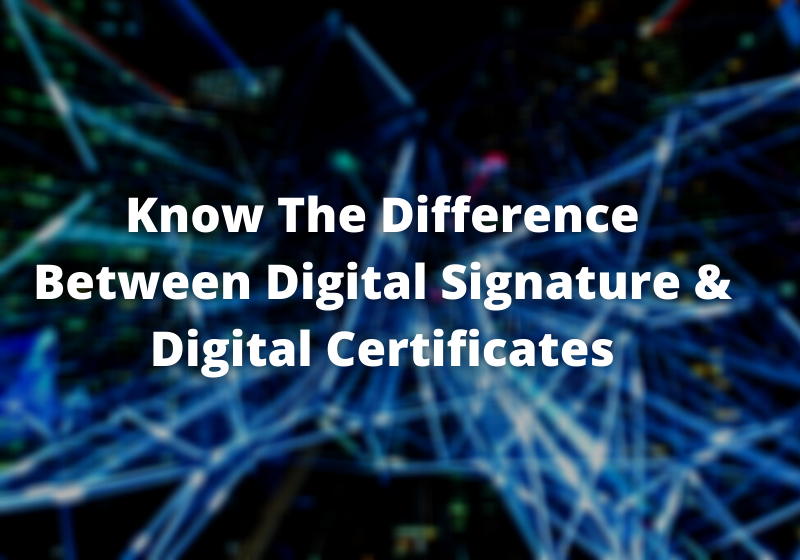Know The Difference Between Digital Signature & Digital Certificates
Introduction
There is a new technology in the market known as public key. It is also commonly known as asymmetric encryption. All the encryptions are done with the new technology, which is hard to break with the current generation computers.
When we are talking about key encryption, there are two keys used by the people to communicate with the devices: a public key and a private key. Both the keys have their role to follow. The public key is open to the world and is shared with the people. They use this key to send you information. While on the other hand, a private key is much more secure and personal.
With the combination of the booth, the keys, a new infrastructure is created to share files and communication of devices, Public Key Infrastructure (PKIs).
Difference Between Digital Signature & Digital Certificates
There is a vague concept among the people regarding the digital signature and digital certificates. Most people consider them the same. However, that is not the case. One keeps the document together, and the other provides secure access to the data.
The digital certificates tie the data and signature together, while the digital signature secures the transition network.
The digital certificates use the public key to identify the data source. Simultaneously, the digital signature uses the public key to verify the authenticity of the data.
Digital Signature
The process starts with person A encrypting the messages before the transfer. The output of this process is also known as a hash. The encryption is then attached to the messages, and then it is sent to person B.
When person B receives the message, the first thing they will need to do is to decrypt the messages with the public key. This way, person B will be able to know that the message is sent from person A.
Now, person B passes the message from the hash value. If the message passes the hash test, person B can be sure that the message has not been tampered with.
Digital Certificates
Digital certificates provide security to website’s digital documentation, which symbolizes that your website is secure from any external fraudulent activities. These certificates go through rigorous checking and are given to only those who are deserving. This way, you can be sure that the website with the digital certificate is worth your trust.
These certificates are managed with the Certificate lifestyle automation technology and are tracked to see how they perform over time.
Let’s understand this whole process with an example.
When you have a website and want to obtain a digital certificate for it, you have to apply it to a certificate authority. You have to give a public key to the certificate authority. The certificate authority will use that public key to match the data with your website. If they find the data relevant to their database, digital certificates will be issued.
The digital certificate will now act like proof to make others believe that your public key is authentic and secure.
Types Of Authorities
When we are talking about authorities, there are generally three authorities that get the job done.
Certificate Signing Request (CSR)
The Registration Authority is a server that waits for the people who send their application for the certificate signing request. This is the first part of the process when public key creation is initialized.
Certificate Revocation List (CRL)
A certificate authority is considered to be highly trusted. This is because another trusted authority signs them. The certificate authority is responsible for managing the data structure called CRL.
Online Certificate Status Protocol (OCSP)
Certificates come with limited time validation. You can renew them manually, or you can do it via online certificate status protocol. This feature of the certificate automation helps the users to keep track of the certificates and allow a renewal process at the time expiration.
Conclusion
There you have it, the difference between digital certificates and digital signatures. We hope that we were able to answer the questions you are looking for. We have tried our best to keep the explanation concise and to the point. Even after this explanation, if you find it difficult to understand anything, please drop your question below.





